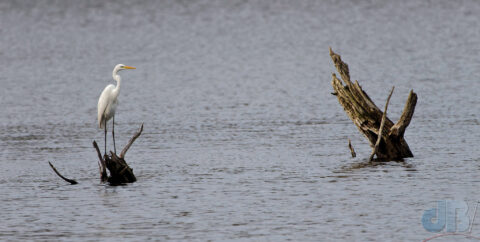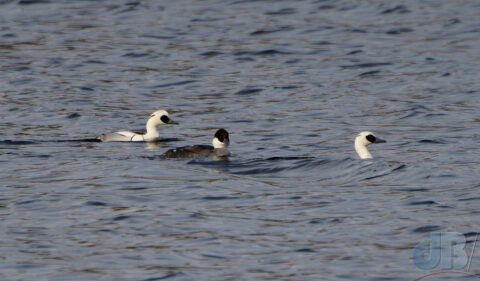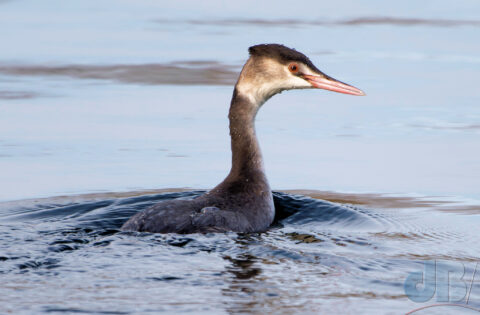TL:DR – Gravel pits that have been converted into nature reserves can offer some lovely scenery and the opportunity to see interesting and even rare wildlife.
There are lots of old gravelworks in our area some of which are earmarked as nature reserves as I’ve mentioned before, a couple of times, and some are used as fisheries. Where there’s water and reeds and trees there will most likely be birds regardless of the anglers or visitors.

On this almost sunny Friday morning, I headed to the fishery lakes adjacent to Meadow Lane, St Ives – known to some as Meadow Lane Pits. I was hoping to see and perhaps get photos of the five Smew, a type of diving duck, that had turned up there earlier in the week. Birders had reported three drakes (males) and two females, known among birders as “redheads” for their obviously different appearance to the males.

I parked up and trekked around the muddy footpaths, trouser bottoms tucked unfashionably into my walking socks, to try and catch sight of the Smew. En route I saw (in no particular order) Tufted Duck, Black-headed Gull, Bullfinch, Starling, Blackbird, Gadwall, Little Egret, Goldeneye, Egyptian Goose, Wigeon, Great White Egret, Great Crested Grebe, Lesser Black-backed Gull, Grey Heron, Great Spotted Woodpecker, Coot, Cormorant, and at some point quite early on, one or two of the Smew, and then all five.

Old gravel pits, particularly those that have been allowed to fill with water, can be nice spots for birdwatching for various reasons. First, there is the potential for habitat diversity. Gravel pits can develop a mix of habitat types, including open water, reedbeds, mudflats, and vegetated areas. This can attract a variety of bird species but it also cultivates large numbers of invertebrates as well as small mammals, amphibia, and fish which can all thrive there if given the chance.
Where old gravelpits have been managed there are often large areas that are not open to the public, so there can be far less disturbance to the wildlife in those areas and along the margins this spills over into the publicly accessible areas. As they mature, these old gravel pits often become tranquil areas of scenic beauty. Many are rather peaceful, hardly see any visitors, have attractive vegetation and in short, the overall combination of habitat diversity, food availability, and lack of disturbance make them excellent spots for a bit of peace and quiet and a spot of birdwatching.